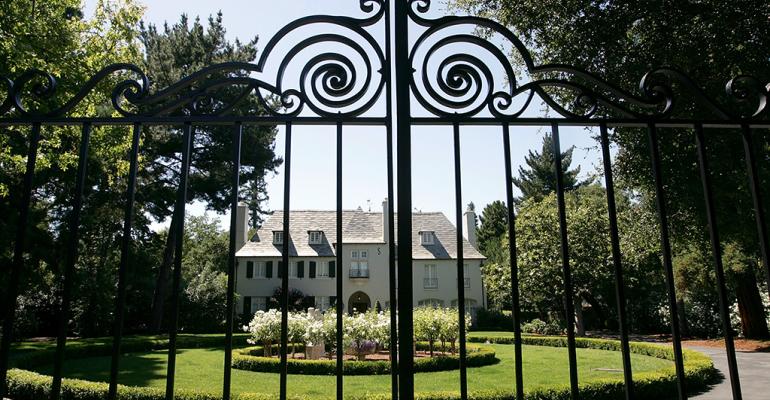Over 80 family office and wealth advisory executives assembled in New York City earlier this month for RayLign Advisory’s 2014 conference program entitled “Listening to the Unspoken – How Families Evaluate and Select Advisors.” The event included presentations aimed at assisting wealth managers in better identifying potential issues with their ultra-high-net-worth (UHNW) clients and most effectively managing those issues as they arise.
Realities Facing Families
The event began with comments by Gregory Rogers, RayLign’s Founder and President, who framed a number of realities facing families and wealth advisors alike: increasing UHNW family structural complexity; elusive real returns on investments net of fees, portfolio costs, spending, taxes and inflation; and heightened demand for high EQ (emotional quotient) skills due to relational and inter-generational communications challenges.
Four Big Unknowns
The discussion then turned to the process families must go through to evaluate candidate wealth advisors and overcome the four “Big Unknowns:” (1) what are the family’s wealth management needs, (2) how does the family organize itself, (3) which wealth advisor business models and firms best fit this family, and (4) what’s the process by which the family will actually make the advisor selection. These family-advisor selection processes are usually non-linear and iterative, particularly when larger stakeholder groups are involved.
Without a process, families end up frustrated by meeting a large number of advisory organizations, collecting a lot of meaningless data and finding themselves floundering due to an inability to respond to the volume of polarized views and conflicts that arise. A process is required to harness the high levels of noise that come from different agendas, experiences and competencies across the family stakeholder base. A thoughtfully-designed process can mitigate the inevitable gyrations that are part and parcel of family decisionmaking, which are exacerbated by the four Big Unknowns. In the case of selecting a wealth advisor, the specific needs of the family must be identified at the outset. If questions are unanswered regarding needs, resource structure and/or industry, the decision-making body will inevitably revert back to find answers before being able to move forward. Left unmanaged, advisors feel frustrated and taken advantage of, and families get stuck in and stalled by conflict.
Wealth Manager Selection Process
Next, the conference focused on the family side of the equation and identifying family needs. RayLign reviewed 18 dimensions that are used to facilitate a discussion about family wealth management needs and identify areas of conflict. Wealth advisors often aren’t able to see the behind-the-scenes conflicts among family members about what they want or believe they need. Family decision-making processes are sometimes not only opaque to advisors, but also, aren’t clear among family members themselves. Relationship, resource and emotional dimensions must be evaluated to come up with a specific family needs profile. This process narrows the focus and provides a script for the family as they approach the marketplace for wealth advisory services.
Part of the manager selection process involves an understanding of the wealth management industry, the phases of organizational evolution and key success factors. RayLign presented a framework to educate families and address many of the unknowns related to industry and service delivery models. This framework is also used as a comparative tool during the candidate due diligence process. The primary components in the framework are: (1) business continuity, (2) investment competency, (3) client intimacy, (4) information assimilation, (5) services coordination, (6) and stakeholder alignment, and (7) the tradeoffs families need to make based on their identified needs.
An essential aspect of the wealth advisor selection process is “shared discovery” between the family and wealth manager candidates. Advisors are making disclosures about their ownership, culture, investment process, service offering, performance and fees, as a way to engage prospect families. Families are, at the same time, revealing various aspects of themselves regarding historic financial management experience, anticipated approach, stylistic biases and relationship expectations. By taking the time to share with one another, the groundwork is being built for a working relationship, at the same time iterating through the four unknowns: (1) needs, (2) structure, (3) industry, and (4) decision-making process. Patience is required from both parties for this process to work. Without a certain level of intimacy through the shared discovery process though, important indicators regarding fit may be missed.
In addition, Covie Edwards, Chief Wealth Advisor at Ballentine Partners, presented a case study for discussion involving a multi-generational client. This actual case highlighted the business model challenges advisors face as they expand their services to support two and even three generations within a family. Rising generation family members, accustomed to full-service access similar to the wealth-creating generation, often put increased demands on relationship management, investments and communications capabilities of wealth advisory firms. Despite advisors’ best intensions to serve the needs of the extended family, they’re sometimes stretched to offer services beyond their mandated model and the confines of the agreed fee structure in place with the family and are forced to have frank conversations with their clients to realign interests, redefine service expectations and possibly restructure fee arrangements. The attendees revealed communication challenges, agency issues, and service, role and business model vulnerabilities that can be associated with supporting multigenerational families.
Rich vs. Wealthy
Closing keynote remarks by New York Times writer Paul Sullivan explored different ways families and individuals behave around wealth, which included nuances between what he described as being rich versus being wealthy. These remarks were made in light of research he’s done in connection with his forthcoming book on the money secrets of the super wealthy.





